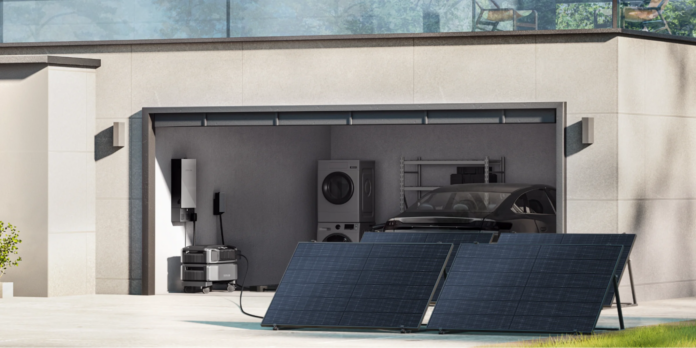Table of Contents
A standby generator is your home’s backup electrical supply. When the power goes out, generators come on, keeping your appliances and devices running smoothly. Portable generators can be used away from home—they can run power tools in a shed or supply electricity to an RV.
With the increase in extreme weather events and aging infrastructure leading to more frequent and sever blackouts, reliable backup power has become a necessity for anyone seeking home energy security.
Keep reading to understand power output ratings for generators, the different types of wattage output you require, the electricity requirements of standard appliances, and how to determine what size generator you need.
What Is a 4000-Watt Generator?
A 4000-watt generator is a portable power supply that produces a continuous OR surge output of 4000 watts (4 kW) of electricity under laboratory conditions.
You might assume that every 4kW generator can run appliances that require a total of 4000W of power.
For example:
Window AC Unit: 1000W
Refrigerator: 700W
Television: 300W
Washing Machine: 1200W
Coffee Maker: 800W
Total Wattage: 4000W
Makes sense, right?
Unfortunately, that assumption is often wrong — particularly with conventional 4kW portable generators that run on fossil fuels like gas, propane, or diesel.
EcoFlow’s portable power stations and solar generators are an exception.
Why?
Because of the difference between starting and running watts.
Let’s dig in.
Understanding Wattage
Starting Watts
Starting wattage is a short burst of power required to start or turn on many high-wattage appliances, particularly any device with a motor.
Similar to a conventional vehicle, appliance with engines and compressors require a significant surge of electricity to overcome “inertia” — in other words to get the rotor in the engine moving from a standstill.
Once the rotor is spinning, the energy required to keep the engine running is significantly reduce.
Automobiles overcome inertia with a starter battery that provides a surge of electricity to get the motor running.
Appliances like refrigerators, washing machines, and air conditioners require a surge of electricity of up to double (or more) of their operating wattage to start.
When appliances are plugged into household plugs, starting watts are rarely an issue. The electrical grid can almost always supply enough starting and running watts to power appliances.
Occasionally, devices with abnormally high power demand require a dedicated circuit, such as a 240V outlet for a central HVAC system or electric water heater.
Almost everyone has had the experience of turning on one too many appliances at once and having a circuit breaker trip.
Something similar happens when you overload a generator beyond its maximum AC output. The generator will shut down for safety and to prevent damage.
That’s why it’s essential to consider the starting and running watts of your appliances.
Running Watts
Running (or operating) wattage is the continuous power required to keep an appliance running once it starts.
Many electrical devices — such as televisions and incandescent lightbulbs — don’t require a surge of additional power to start.
However, appliances that need a “jump start” require significantly more surge power than operating power or they won’t turn on.
Surge Power
Surge power is often used interchangeably with starting watts.
Both refer to the initial burst of power needed to start an appliance.
Frequently, surge power is used by manufacturers to measure a generator’s capacity to handle momentary spikes in power loads, while starting wattage is commonly used when referring to the appliance’s power demand when it’s turned on.
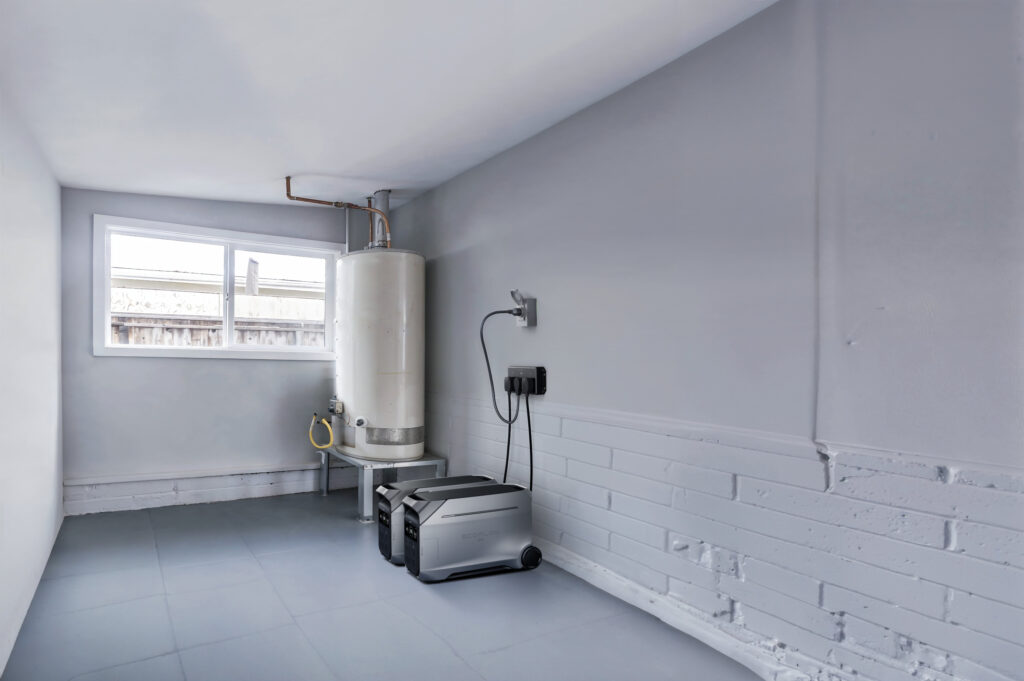
For example, EcoFlow’s DELTA Pro 3 generator provides 4000W of continuous AC output and 8000W of surge power.
Traditional gas generators often provide only 10% – 15% of surge power or less, although more advanced models may offer more.
To make things even more confusing, many portable generator manufacturers use surge power to rate AC output.
For example, a 4000W gas generator may have an operating output of 3600W or less.
If a power demand over 4kW occurs, the generator will definitely shut down, but in practice it may only support running electrical loads of 10-15% less than 4000W.
Watt-Hours
A watt-hour is a unit of energy that measures power consumption over time.
For example, a television with a running wattage of 150W that’s turned on for one hour consumes 150wH.
You’re probably familiar with kilowatt-hours (kWh) from your monthly energy bills.
Electricity consumption charges are calculated at the rate of cents per kilo-watt hour (¢/kWh).
Watt-hours and kWh are also commonly used to measure the storage capacity of home backup batteries and solar generators.
For example, EcoFlow DELTA Pron 3 is a 4000W generator with a battery storage capacity of 4kWh.
Each unit is expandable up to 36kWh with Smart Extra Batteries.
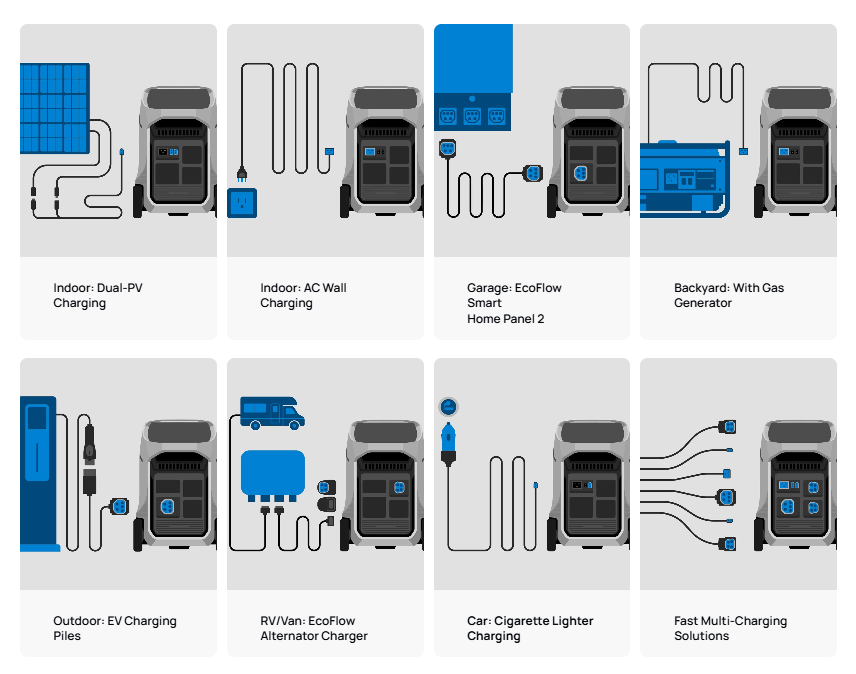
EcoFlow DELTA Pro 3 offers multiple charging methods including seamless integration with Smart Generator 4000 — a dual-fuel (gas and propane) inverter generator that extends system runtime up 48kWh between charges.
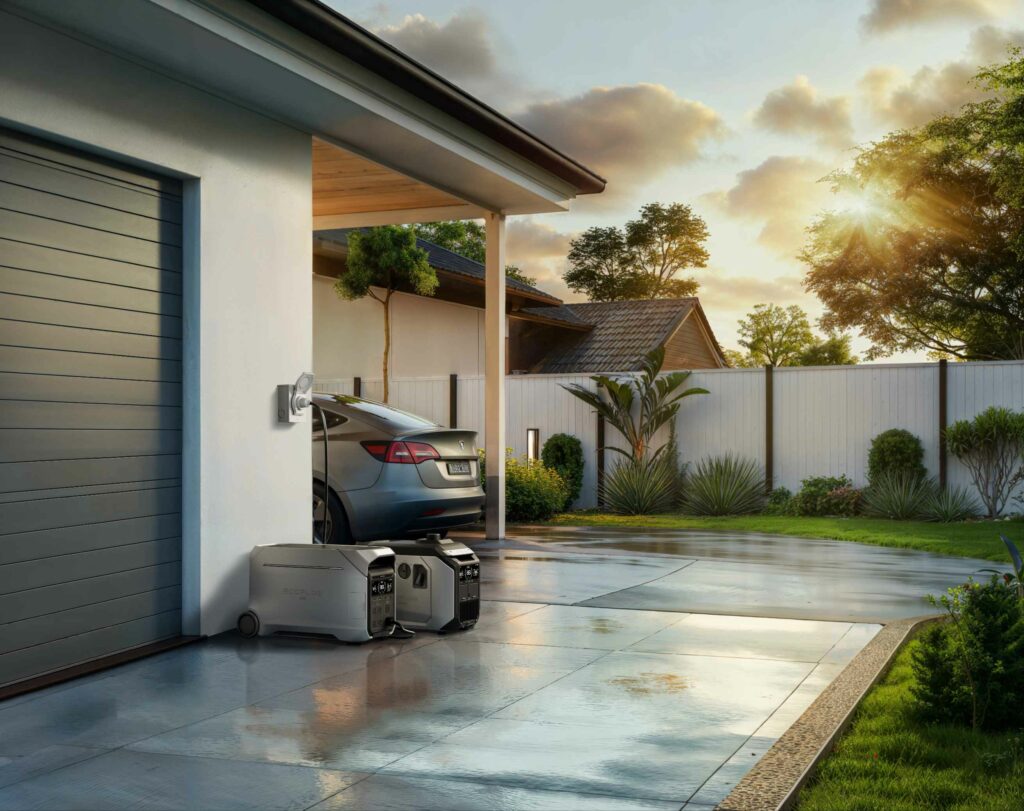
What Can a 4000-Watt Generator Run?
To determine what appliances a 4000W generator can run and how many it can power simultaneously, it’s essential to total the starting and running watts of all the devices you want to run at once.
You may need to do some digging to determine the starting wattage requirements of many home appliances.
Most companies list the operating wattage on the manufacturer’s label — NOT the starting wattage requirements.
That’s because surge power is rarely a concern when you plug appliances into a wall outlet.
It only becomes an essential spec when you’re connecting it to an off-grid electricity source, like a gas or hybrid generator.
You can often find the starting wattage requirements in the product manual or on the manufacturer’s website.
It’s an essential step to choosing the right generator if you’re running high-wattage appliances with engines or compressors.
Here’s a list of common appliances with their average starting and running watts. If no additional power is needed to start the appliance, the starting watts are the same as the running watts.
| Selected Appliances | Rated (Running Watts) | Additional Starting Watts |
| Refrigerator | 700 | 2200 |
| Television | 200-300 | 200-300 |
| Dryer | 5400 | 10000 |
| Washing Machine | 1200 | 2300 |
| Dishwasher | 1300 | 1800 |
| Space Heater | 2000 | 2000 |
| Coffee Maker | 800-1200 | 800-1200 |
| Window Air Conditioner | 1000 | 2000 |
| Toaster | 800-1500 | 800-1500 |
For a more extensive list and a free home energy calculator, check this out:
Appliance Wattage Chart & Energy Usage Calculator
Determining What Size Generator Is Necessary
List Out Appliances
The first step in deciding what size generator you need is to make a comprehensive list of all the appliances and devices you want to start and run.
Consider where the generator will be used most. Do you need an RV-rated generator or just one for the home?
Determine Power Requirements
Identify each appliance’s starting and running wattage.
Calculate Total Wattage
Sum the wattage of the appliances that will be used simultaneously, then add the highest starting wattage.
You don’t need to add all the starting wattages because appliances do not usually start simultaneously.
Find A Generator
Once you’ve determined the watts needed, you can choose a generator.
EcoFlow DELTA Pro 3 is a 4kW (8kW surge) generator that’s expandable to 8 kW (16kW surge) or 12kW (24kW surge) by chaining up to the 3 units together in parallel.
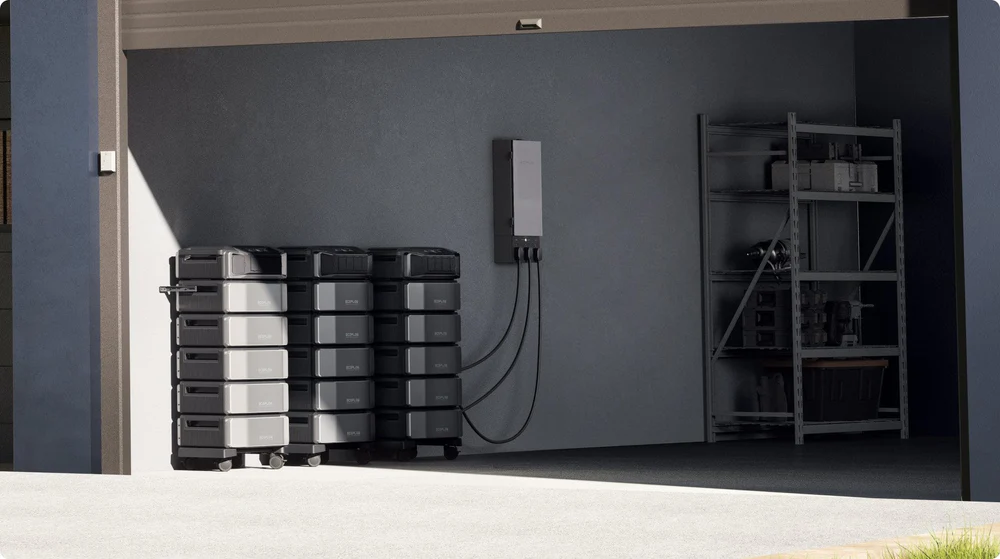
If that’s still not enough wattage, DELTA Pro Ultra is the EcoFlow’s most powerful whole-home standby generator, with a maximum AC output of 21.6kW and storage capacity of 90 kWh — more than enough power for almost any home.
EcoFlow DELTA Pro 3 and DELTA Pro Ultra feature proprietary X-Core 3.0 tech architecture, providing industry-leading performance, safety, and intelligence.
X-Core 3.0 delivers the following benefits.
- X-Stream delivers record-speed charging — only 50 minutes
- X-Boost’s revolutionary soft-start algorithm supports up to 6000W of appliances and central HVAC systems with just one unit
- X-Link parallel expansion provides up to 21.6kW of output power and 90kWh of electricity storage
- X-Quiet volume minimization means whisper-quiet operation at an industry-best 30dB*
- X-Fusion outpowers the grid by providing up to 7000W of electricity output from a single AC outlet in bypass mode. Standard household plugs deliver only 1800W. Plug in EcoFlow DELTA Pro 3 or DELTA Pro Ultra and increase your output by close to 300%
- X-Guard is a protective triad of structure, material, and AI that keeps your home and family safe. It can even self-extinguish in the unlikely event of a fire.
Find out more about X-Core 3.0 here.
Frequently Asked Questions
A 4000W generator will run most window AC units but may lack sufficient starting and running watts to operate a central HVAC system. For example, the average 3-ton central air conditioning unit consumes around 2500W-3000W of continuous power but requires double the wattage (or more) as surge power to start. If you want to run other high-wattage appliances in addition to an AC, 4000W is unlikely to be sufficient.
For most use cases, a 4000W generator is an ideal size for 30A/120V RV electrical systems. The maximum wattage a 30A/120V system can handle is 3600W (30A * 120V = 3600W). Confirm that the 4000W generator you’re considering has an operating wattage of 3600W or more. Many manufacturers advertise the starting power of generators — not the continuous operating output.
Yes, a 4000W generator has more than enough AC output capacity to run a fridge. Most home refrigerators consume between 100W-500W when operating and up to double their wattage when the compressor starts. However, be careful if you wish to operate additional high-wattage appliances simultaneously. Ensure the combined starting and running wattages do not exceed the generator’s maximum AC output. Ideally, AC output capacity should exceed your power demands by 10%-20%.
It depends on the furnace type. A 4000W generator can often operate a gas furnace with an electric blower motor. Gas is the heat source, and the fan typically consumes 600W-1200W (2000W-3000W starting watts). However, it’s highly unlikely that a 4000W generator can run an electric furnace. Generating heat from electricity requires far more power. An electric furnace typically requires 5000W or more of power.
Unless you live in a tiny house with very few appliances, it’s unlikely that a 4000W generator can power your entire home. It may be sufficient for backing up essential appliances like a refrigerator, lights, and a window AC unit. But if you want to run central HVAC, electric water heaters, electric ovens, or other high-wattage appliances, the starting and running wattage output of a 4000W generator is unlikely to be sufficient.
It depends on the generator’s voltage output. Wattage = Volts x Amps. If your generator outputs 4000W at 120V, the amperage will be 33.33A. If it outputs 4000W at 240V, it will produce 16.67 amps. Many generators provide both 120V and 240V outputs. 120V is almost always used for household appliances. 240V output may be used for central AC, water heaters, and other appliances with significant power requirements.
This is similar to asking, “How much does a car cost?” Price range varies based on fuel type (gas, propane, diesel, solar), features like remote start, quiet operation, and numerous other factors. A bare-bones conventional 4000W portable generator will cost around $300-$400. A high-quality inverter generator? Around $1500. A 4000W solar generator costs about $3000, but there are no ongoing fuel costs and many other advantages, including safe indoor use and whisper-quiet operation.
Final Thoughts
Understanding a generator’s operating and surge power output is crucial to making an informed purchase decision.
It’s also essential to identify the running wattage and starting wattage of the appliances you want your generator to power.
Otherwise, you may end up with a generator that doesn’t meet your needs.
Unlike conventional gas generators, EcoFlow DELTA Pro 3 offers 4000W of continuous AC output and doubles that to 8000W of surge power to start and run more appliances simultaneously.
Many traditional generators rated as 4000W only offer 3500W or less of operating power.
EcoFlow has a wide range of portable power stations, solar generators and inverter generators to meet your needs.
Check out our selection today.
